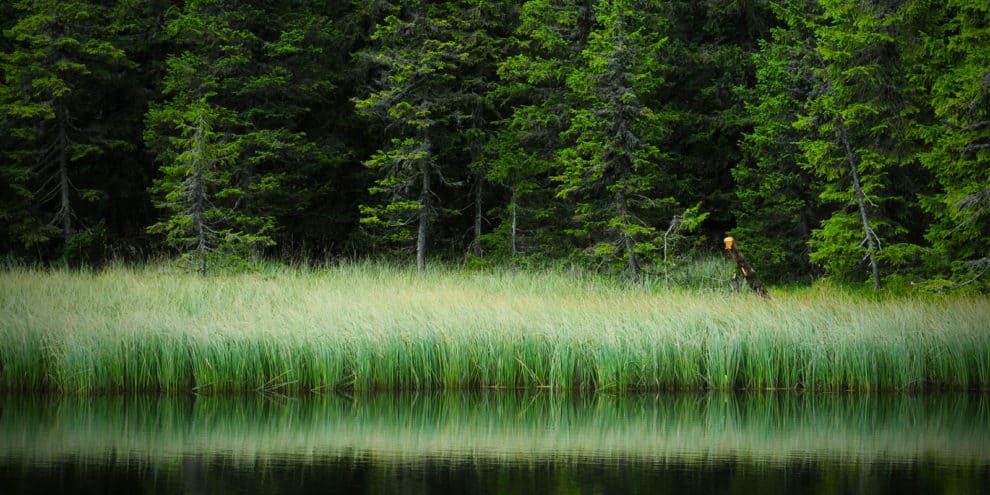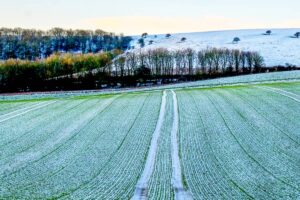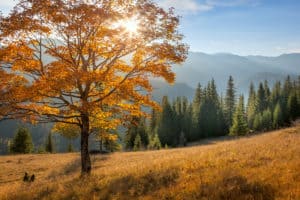The final post of this series on land buyer due diligence focuses on three physical attributes that can significantly influence property value. Please keep in mind that this is only a primer for buyers of land for sale, to assist them in identifying a property.
Timber
If you are considering buying land in the Northeast or Appalachian Regions of the U.S., the chances are good that trees will be on it. Some of the most forested states in the country are in these regions. Many people buy land because of the trees, whether indirectly because of their aesthetic contribution or directly because of their potential to general timber income over time.
Most real estate agents have little to no understanding of timber value and are unable to convey any useful information about species types, volumes or estimated market value. Unless the seller has worked with a forester to complete a timber inventory and valuation, the buyer is on their own to determine the timber value and how it correlates to the seller’s asking price. However, in most cases, if the property is being marketed as a “timber investment” or a “recreational woodlot” (often less than 200 acres), then there should be a timber inventory available.
Understanding timber value requires some research, and there are a number of useful resources available to assist the buyer. One place to look is the state forestry association (e.g. New Hampshire Timberland Owners Association), a private, non-profit organization that represents the interests of forest land owners. Many of these organizations maintain a quarterly “forest products survey” or “stumpage report” that offer prices for various species and products such as red oak sawlogs or white pine pulp. These surveys are often a few months or an entire quarter behind the actual market, so be aware that published prices are only a relative gauge to assess current market value. Some state agencies and state universities (e.g. Massachusetts Cooperative Extension) also maintain a survey that offers quarterly stumpage reports – that is, the prevailing prices for standing timber (“on the stump”).
The most valuable resource in assisting you in the due diligence process will be a local forester who understands timber quality, knows the wood markets, and who can also conduct a “timber audit” to confirm the accuracy of the seller-provided information.
Soils
Outside of forestry and agricultural circles, soil is perhaps the most under-appreciated and misunderstood factor in successfully growing and managing a healthy forest. When evaluating a forest to purchase, even if primarily used for recreation, a basic knowledge of soil types offers an understanding of the forest’s current and future productivity, species diversity, stem quality and tree height.
For example, if the goal is to establish a maple sugaring operation, then soils that are deep, moderately well-drained and acidic to slightly alkaline are preferable. Obviously, the presence of healthy maple trees growing on site will provide a good indicator of favorable soils. If the goal is to grow white pine timber, the soils can be sandy and less nutrient rich; however, this species can also grow well in a variety of soil types throughout its range. Red oak also likes sandy or rocky soils but does not do well in the moist, colder soils of far northern New England.
In New England and Appalachian Regions, soil type will often dictate the timing of harvesting operations. Understanding the various soil types, specifically their capacity to retain or hold water, is an important consideration when developing long-term forestry plans.
To learn more about soils and their importance to forest health, there is no better source than the USDA Natural Resource Conservation Service.
While you’re there, check out the “Soil Survey” section, which provides a process to access published soil data to create a detailed soil map of the parcel of interest.
Water
Many buyers seeking recreational land for sale desire some type of water body. Some seek ponds, lakefront, rivers or even open water wetlands. While we often chuckle when we read “babbling brook!” in the property description, real estate agents are simply appealing to market demand. Given a choice between land with no water and land with a small brook, buyers will often gravitate to the latter when all other aspects are relatively equal.
Regardless of the water body type or size, it’s a good idea to consider the surrounding land use patterns to determine what “upstream” activities may impact water quality. Using Google Earth Maps, study the surrounding topography contributing to the water body on the parcel of interest. Ask the broker or the seller about the land use history of the parcel. If it’s a large parcel (>100 acres) consider conducting a Phase I Environmental Site Assessment (ESA), a visual site inspection conducted by a licensed environmental consulting firm to identify any prior or present evidence of hazardous contamination. Part of a Phase I ESA includes a voluntary interview with the landowner to document what they know about the past land uses of the property.
If the goal is to build on the property, check the municipal and state shore land protection laws that define how close buildings can be constructed near ponds, lakes and rivers. Will you be able to construct a dock on the shoreline? How high does the river or brook get during spring run-off? Mandated buffer zones should keep you out of areas where flash flooding could occur.
If forestry is the primary use, understand the buffer zone laws and setback distances from various water bodies for forestry activity. Consider timber retention in these areas as part of your forest management plan.
If fishing is a passion, then you will want to know the native fish populations and fishing regulations. Is it a warm water fishery hosting bass, perch and pickerel or a cold water fishery hosting trout and land-locked salmon? Some states, like Maine, have historical lake and pond surveys that offer the water depth, type of fishery and stocking status. These surveys are often dated (>10 years old) but still offer useful information for avid anglers.
This concludes Part III of our Land Buyer’s Checklist (see also Part I – Due Diligence and Part II – Location, Zoning, Taxes). As we stated at the beginning, each topic covered is merely a primer to get you thinking about items to consider when purchasing land. Contact an experienced land broker for more information.
Written by Patrick Hackley, a professional forester and timberland broker with Fountains Land who has served timberland owners and buyers in the northeast since 2005.
This content may not be used or reproduced in any manner whatsoever, in part or in whole, without written permission of LANDTHINK. Use of this content without permission is a violation of federal copyright law. The articles, posts, comments, opinions and information provided by LANDTHINK are for informational and research purposes only and DOES NOT substitute or coincide with the advice of an attorney, accountant, real estate broker or any other licensed real estate professional. LANDTHINK strongly advises visitors and readers to seek their own professional guidance and advice related to buying, investing in or selling real estate.










Add Comment